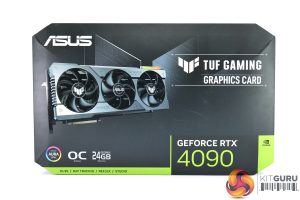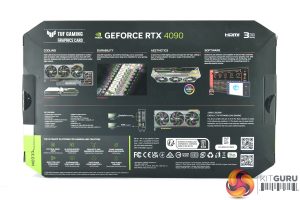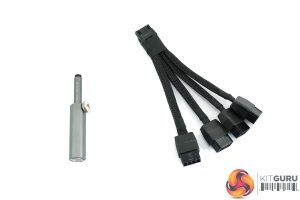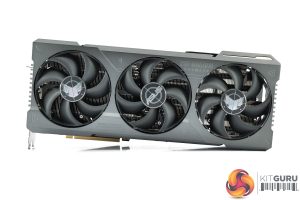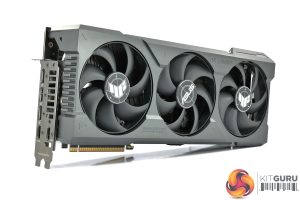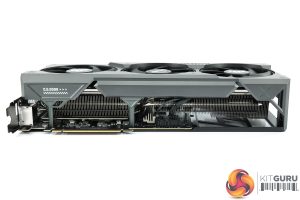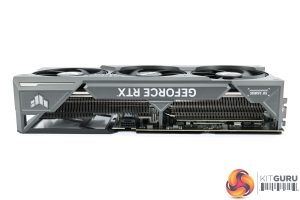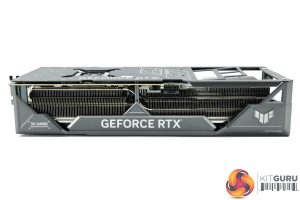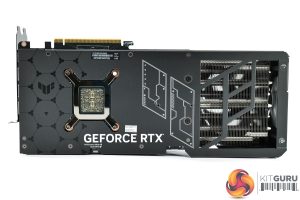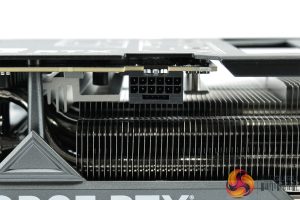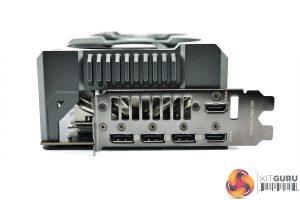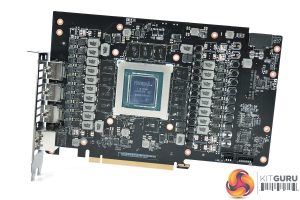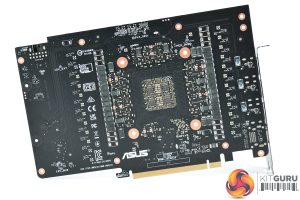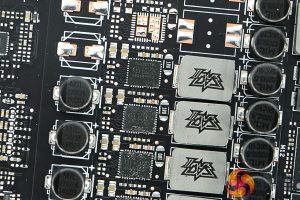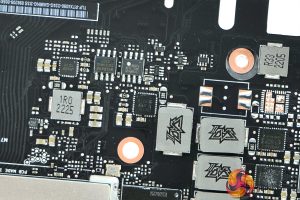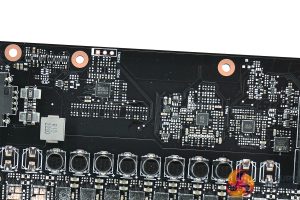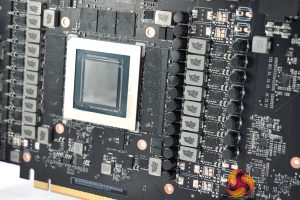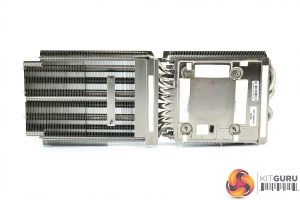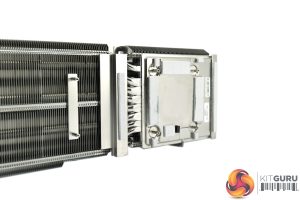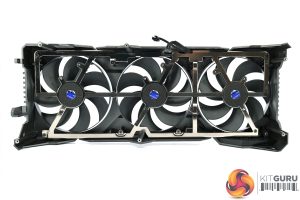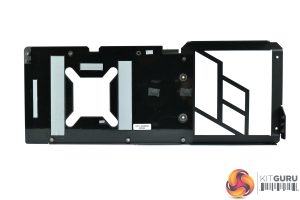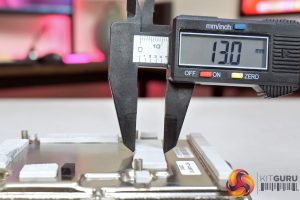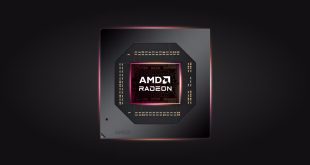The ASUS RTX 4090 TUF Gaming OC ships in a black box, with product branding and an image of the card visible on the front. On the back, ASUS highlights various key features of the card and cooler.
A variety of documents are included, though more interesting is the small GPU support bar that can be adjusted to prop up the graphics card, avoiding GPU sag. It's a fairly basic addition but it works, so we can't complain. A quad 8-pin adapter is included, and I had no issues using this during my testing.
As for the card itself, ASUS has continued the overall design language from the TUF 30-series range, with a beautifully-designed aluminium shroud being used. This really helps to give the card a premium look and feel, and it far outstrips the likes of the Gigabyte Gaming OC in this regard. In my view, this is easily the best-looking RTX 4090 I have tested so far.
We can also get a look at the three 105mm Axial Tech fans. Due to the increased size of these, ASUS claims a 23% increase in airflow versus the previous generation. We can also note the central fan spins in reverse which should help to reduce airflow turbulence and therefore increase air pressure down into the heatsink.
Of course, the metal shroud does add a good amount of weight to the card, and the TUF Gaming OC is the heaviest RTX 4090 I’ve seen yet, coming in at over 2.3KG. It's also the longest card I've reviewed, coming in at 348.2 x 150 x 72.6 mm, though it’s not quite as thick as the Gigabyte Gaming OC, it’s still a 3.65 slot card.
We also get a full-length black metal backplate, featuring a 10cm cut-out towards the end of the card which allows air to flow directly through the heatsink.
The dual-BIOS switch is also positioned on the back of the card, with a choice of either the Performance or Quiet mode – both are identical in terms of clock speeds and power limits, with the only difference coming in terms of the fan curve, which we test later in the review.
We can also note the 12VHPWR power connector is positioned in a central location.
Display outputs have been tweaked compared to the reference design, with ASUS offering 3x DisplayPort 1.4 and 2x HDMI 2.1. This gives a total of five outputs, and while only four can be used simultaneously, it's good to have the extra flexibility of the additional HDMI 2.1 depending on your exact monitor setup.
As for the PCB, we can see ASUS is using an 18-phase VRM for the GPU, using 70Amp Infineon TDA21570 MOSFETs, while the memory VRM is 4-phase, this time using 50A Vishay SIC639 MOSFETs. A Monolithic Power Systems MP2888A controller is used for the GPU VRM, with a UPI UP9512 controlling the memory VRM.
The cooler is another vapour chamber design, with a shared baseplate that contacts both the GPU and memory modules. This sits on top of 5x 8mm heatpipes and 3x 6mm heatpipes, all of which are nickel plated. The VRMs contact with additional baseplates via thermal pads.
I do also want to give credit to ASUS for designing the card in a way that means the shroud can actually be removed while leaving the cooler intact – still attached to the PCB, in other words. This means you don't have to completely disassemble the card to change a faulty fan, for instance, which is a consumer-friendly move in my opinion.
We can also note that ASUS is using thermal pads on the underside of the backplate to help draw heat out from the back of the PCB.
One thing I did notice with the cooler, however, is in regards to the thermal pad width. When looking at the PCB, I noticed the four memory modules on the right side of the GPU didn’t seem to be completely covered by the thermal pad, as the pad imprint visibly does not extend all the way to the edge of the modules.
Sure enough, the thermal pad used here is actually narrower than the one on the other side – you might be able to tell just by looking, but I also used my digital calliper and found the left side pad to measure about 13mm wide, compared to just over 11mm on the other side.
This isn't necessarily a big deal as the uncovered area of the memory modules is relatively small, but it is something to note. I'm not quite sure why ASUS didn't use thermal pads of equal width, but there we are. We test memory thermals later in the review.
 KitGuru KitGuru.net – Tech News | Hardware News | Hardware Reviews | IOS | Mobile | Gaming | Graphics Cards
KitGuru KitGuru.net – Tech News | Hardware News | Hardware Reviews | IOS | Mobile | Gaming | Graphics Cards


